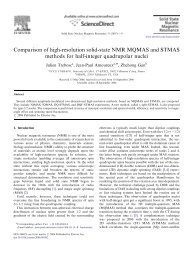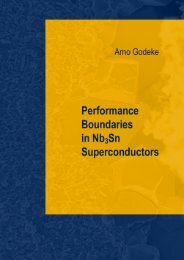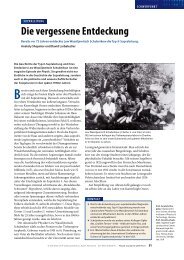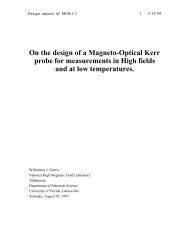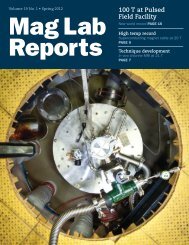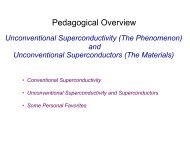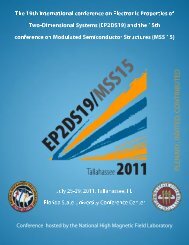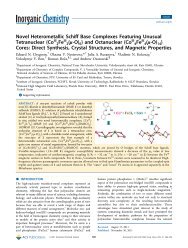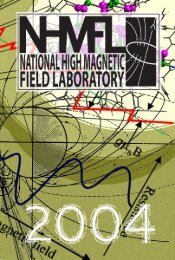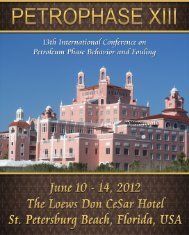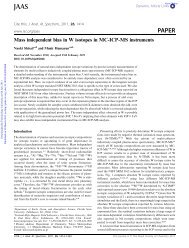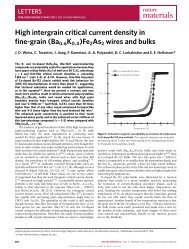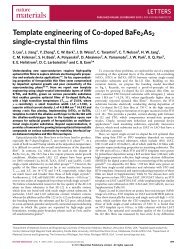Microscopes and Crystals - National High Magnetic Field Laboratory
Microscopes and Crystals - National High Magnetic Field Laboratory
Microscopes and Crystals - National High Magnetic Field Laboratory
Create successful ePaper yourself
Turn your PDF publications into a flip-book with our unique Google optimized e-Paper software.
ACTIVITY 13: EXPLORING MICROSCOPES<br />
m6: <strong>Microscopes</strong> <strong>and</strong> <strong>Crystals</strong><br />
A CT<br />
CTIVITY<br />
Exploring With <strong>Microscopes</strong><br />
T he compound microscope was invented in about 1595 by Zacharias Janssen. Robert<br />
Hooke (1635-1703) made compound microscopes containing two or sometimes three lenses,<br />
which he began using in the 1660’s.<br />
In 1665 Robert Hooke published a remarkable book<br />
called Micrographia, which contained detailed<br />
drawings <strong>and</strong> descriptions of small objects from<br />
flies to fleas. With the help of a recent invention,<br />
the microscope, Hooke showed things that once<br />
had been invisible. Two types of microscopes were<br />
in use, the “simple” microscope that had just one<br />
lens, <strong>and</strong> the “compound” microscope which had<br />
two or more lenses. Hooke used a compound<br />
microscope, while Anton van Leeuwenhoek, another<br />
pioneer of microscopy, used simple microscopes made<br />
with very good lenses. His great care in grinding these lenses produced excellent results. Van<br />
Leeuwenhoek made detailed studies of many tiny “animalcules,” <strong>and</strong> was the first person to<br />
ever see bacteria. The magnifying power of his simple microscopes ranged from about 70 times<br />
(70X) to more than 250 times (250X). A wonderful source for the history of microscopes can<br />
be found at http://micro.magnet.fsu.edu<br />
At its simplest, a compound microscope needs just two lenses, a small but powerful objective<br />
lens, <strong>and</strong> a larger eyepiece lens. [The field microscope found in your Science, Optics <strong>and</strong> You<br />
package is a simple microscope until you use the eyepiece attachment which makes it a compound<br />
microscope.] Light from the specimen is focused by the objective lens so that it forms a magnified<br />
image. The eyepiece lens then enlarges this just like a magnifying glass, so that the observer’s<br />
eye traces the light back to see a much bigger image. A compound (two-lens) microscope<br />
produces an image that is inverted, or back-to-front.<br />
In Exploring with <strong>Microscopes</strong>, students should see the relationship between magnifying lenses<br />
<strong>and</strong> microscopes <strong>and</strong> realize that the same principle used in finding the focal point of a lens is<br />
used in focusing a microscope. In the following activities the students will be exploring some<br />
simple microscopes <strong>and</strong> the field microscope which can be found in the Science Optics <strong>and</strong> You<br />
package.<br />
SCIENCE, OPTICS & YOU GUIDEBOOK<br />
- 119 -



